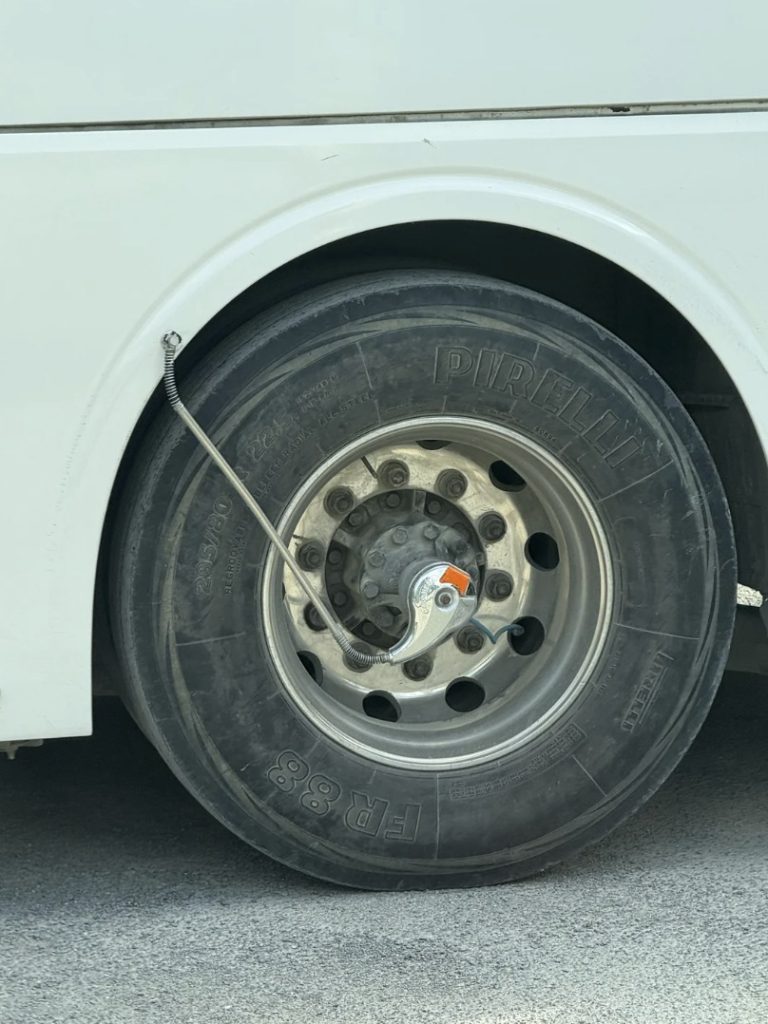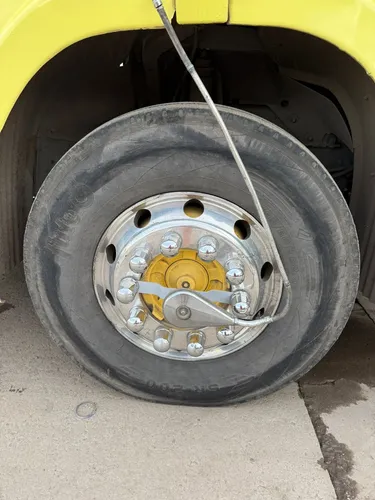It All Started with a Tube on a Tire…
Picture this: you’re standing at a rest stop off I-40, clutching a lukewarm gas station coffee, staring at a big, shiny tour bus. You’re not expecting to learn anything new — but then, you spot a strange little hose dangling from one of the wheels. Weird, right? Your first guess might be that it’s some sort of anti-theft gadget. But what you’re actually looking at is a Central Tire Inflation System, or CTIS — a quiet but powerful innovation that’s been keeping heavy-duty vehicles safer and more efficient for decades.

What Is CTIS, and Why Should You Care?
CTIS is exactly what it sounds like — a smart system that adjusts tire pressure on the fly while the vehicle is moving. Sounds futuristic, right? It’s real, and it’s been around for a while. Originally designed for military vehicles during World War II, CTIS was built to handle rugged terrain, variable loads, and unpredictable conditions — all without stopping to fiddle with a tire gauge.
Today, that same tech has made its way into commercial transportation, including logging trucks, tractors, mining haulers, and yes — intercity buses and tour coaches.
Video: Central Tire Inflation System (CTIS) from @pump.is !
How Central Tire Inflation Systems Work
The concept behind CTIS is surprisingly elegant. Here’s the breakdown:
- Each tire connects to an onboard air compressor through a flexible hose and a swivel joint called a rotary union.
- The system continuously monitors tire pressure and adjusts it automatically.
- If the terrain changes — say, from highway asphalt to loose gravel — the system drops the tire pressure for better traction.
- When back on smooth roads, CTIS re-inflates the tires for fuel efficiency and smoother handling.
And the best part? The driver doesn’t need to stop or even leave their seat. It all happens in real-time, while the wheels are turning.

A Military Invention Turned Civilian Superpower
Back in WWII, the idea of adjusting tire pressure mid-drive was a game-changer. Troops could move through sand, mud, snow — you name it — without losing momentum. Early versions of CTIS were manual and clunky, but the concept was solid. By the 1980s, improved versions were rolling out on vehicles like the Humvee, thanks to innovations like rotary unions, which allowed pressurized air to flow through rotating wheels.
That breakthrough paved the way for the commercial systems we see today — especially on vehicles where safety, uptime, and performance are critical.
Why It Matters on Today’s Roads
So, what’s the big deal about CTIS on a tour bus or delivery truck? It’s not just about tech bragging rights — it’s about keeping people safe and vehicles running smoothly.
Let’s break down what CTIS actually does:
- Improves traction by lowering tire pressure on soft or slick surfaces.
- Extends tire life by avoiding under- or over-inflation, which causes uneven wear.
- Reduces blowout risk, especially under heavy loads or long-distance hauls.
- Increases fuel efficiency by keeping rolling resistance optimized.
- Minimizes downtime by preventing tire-related breakdowns before they happen.
In short: CTIS takes something most people overlook — tire pressure — and turns it into a high-tech tool for reliability and safety.
Video: ⚠️Exciting News Alert!‼️ We are thrilled to introduce the first of its kind in North America CTIS ⬇️
Spotting CTIS in the Wild
Once you know what to look for, you’ll start seeing CTIS setups everywhere — from buses to big rigs to military convoys. The most noticeable feature is the thin air hose that runs from the wheel hub into a central system.
Sometimes you’ll also see a small red indicator on the wheel itself. If that pops out, it’s a visual signal that the pressure is too low and needs checking. These simple cues help maintenance crews catch issues before they turn into problems on the road.
Why Every Car Doesn’t Have It (Yet)
So here’s the obvious question: if CTIS is so amazing, why isn’t it on every single car?
It comes down to two things: cost and complexity. Installing CTIS requires more parts — rotary unions, sensors, hoses, and an onboard air source. For heavy vehicles that face tough road conditions, it’s absolutely worth it. But for your average sedan that stays on paved roads and gets serviced regularly, it’s a luxury — not a necessity.
That said, some off-road SUVs and overlanding vehicles are starting to adopt similar systems. And who knows? In the future, CTIS (or a version of it) might be a standard safety feature on high-end vehicles.

A Small Detail That Makes a Big Difference
What seems like a tiny hose is actually part of a massive improvement in transportation tech. And it’s not flashy. Most passengers on a bus with CTIS won’t even notice it. But behind the scenes, it’s quietly doing its job — keeping tires stable, passengers safe, and routes running on time.
Think of it as the unsung hero of modern mobility. Just like airbags and anti-lock brakes revolutionized car safety, CTIS is making a big impact where it counts — especially for the giants of the road.
Conclusion: CTIS — Quietly Making Every Ride Safer
Next time you see a tour bus or a long-haul truck, take a second to glance at the wheels. If you spot a little air hose looping out from the hub, you’ll know what’s up — CTIS is at work.
It’s not glamorous. It’s not loud. But it’s one of those behind-the-scenes technologies that make modern travel smoother, safer, and smarter. A tiny upgrade with enormous value. And all it took was a curious glance at a rest stop to uncover one of the most practical secrets of today’s transportation world.